Hongryudonggyegok Valley (홍류동계곡)
6.8 Km 8817 2020-01-06
1502-9, Gayasan-ro, Gaya-myeon, Hapcheon-gun, Gyeongsangnam-do
+82-55-930-8000
The 4 km valley between the entrance of Gayasan Mountain National Park entrance and Haeinsa Temple is called Hongryudonggyegok Valley. It was named so because the leaves turn so crimson that the water of the valley reflects the color and appears crimson as well. This is the place where Chi-Won Choe, after returning from Dang China to Silla (BC 57-AD 935) found Korea in disarray. It was too much to bear for him so he retired to live privately with poetry until his death.
There are 19 famous places in Hongryudonggyegok Valley, including major cultural assets like Jongsangjeong Pavilion, Nakhwadam, and Bunokpok. The scenery of Nongsanjeong Pavilion, where Chi-Won Choe read poetry and played baduk, is especially beautiful. On the opposite side is a rock where you can see the handwring of Chi-Won Choe. The Yongmunpokpo Falls, located on the north end of the valley, has beautiful scenery with its harmonious blend of falling water and Giamgoiseok (fantastic rocks and stones).
The scenery of Hongryudonggyegok Valley changes every season, and it is the finest part of Gayasan Mountain. It is famous for the azaleas in full bloom during the spring, and for the thousand-year-old pine trees and broad-leaved trees growing thickly throughout the valley and the cool, clear water that runs through it during the summer. In the fall, the nearby pine tree forests and broad-leaved trees tinge in color and accentuate the crimson foliage of autumnal leaves, making the crimson reflection of the leaves in the valley water look like a rising flame, and shows why the valley was named Hongryudonggyegok Valley.
Gayasan Sori-gil (가야산 소리길)
7.4 Km 6689 2024-02-23
1783 Gayasan-ro, Gaya-myeon, Hapcheon-gun, Gyeongsangnam-do
Gayasan Sori-gil is a 6-kilometer walk from Hapcheon Theme Park of the Tripitaka Koreana to Yeongsangyo Bridge, near Haeinsa Temple (one of the three major temples in Korea), which restores the old Hongnyu-dong path. This route allows you to stroll along the valley, where you can listen to the sounds of water, birdsong, and immerse yourself in the natural beauty of Korea. Along the way, you can visit some of Gayasan's stunning locations, including Nongsanjeong Pavilion, Gilsangam Hermitage, Nakhwadam Reservoir, and a red clay trail.
Busan Sikdang (부산식당)
7.5 Km 21057 2024-02-27
8 Chiin 1-gil, Gaya-myeon, Hapcheon-gun, Gyeongsangnam-do
Busan Sikdang is a restaurant specializing in sanchae bibimbap (wild vegetable bibimbap), located in front of Haeinsa Temple, which houses the Tripitaka Koreana. They offer local dishes such as sanchae hanjeongsik (wild vegetables Korean table d'hote) and pyogobeoseot jeongsik (shiitake mushrooms set menu) made with wild vegetables, deodeok, mushrooms, and other ingredients harvested from Gayasan Mountain. Side dishes include seasoned wild vegetables, grilled deodeok, green onion pancakes, and acorn jelly salad.
Dals Garden [Korea Quality] / 달의 정원 [한국관광 품질인증]
7.6 Km 393 2020-09-03
13-31, Chiin 1-gil, Hapcheon-gun, Gyeongsangnam-do
055-934-0107
The ‘Dals Garden’ is a modern facility grafted on a traditional Korean style house. The old but graceful walls with the garden beyond them welcome the guests first. Entering the house, various flower plants and a wide grass garden add to the excitement of travelers. The Toenmaru (a narrow wooden porch running along the outside of the room), pillars and tiles of the neat and well-constructed Korean style house, shine as if they are wiped with oil every day. The peak of Mt. Gayasan beyond the house looks like a picture at a glance. The Moon Garden has 10 rooms in total. Among them, 2 Special Rooms are a little wider than ordinary rooms and equipped with a sink. Though cooking in the room is not allowed, simple food and beverage can be consumed if they are cleaned well afterwards. The room with a single bed is good for a solo traveler or a foreigner who is not accustomed to sleeping in an Ondol room. It takes only 3 minutes to go to Haeinsa Intercity Bus Stop. It is required, however, to pay the admission fee to Haeinsa Temple and the parking fee in addition to the room rates because the house is located on the way to Haeinsa Temple. It is recommended to enjoy walking around the Haeinsa Temple early in the next morning or going up to nearby peaks such as Mt. Maehwasan or Namsan Cheil Peak.
Haeinsa Tourist Hotel (해인사관광호텔)
7.8 Km 12804 2021-03-19
13-45, Chiin 1-gil, Hapcheon-gun, Gyeongsangnam-do
+82-55-933-2000
Situated in the midst of Haedongmyeongsan Mountain's Gayasan Mountain forest, Haeinsa Tourist Hotel offers visitors a well-being life and relaxation. The guests have the option to choose a room with Gayasan Mountain view and a forest view, providing a different feel to each room. With varying views throughout the seasons as well as a magnificent view of the surrounding mountain and its rocky cliffs, the hotel gives a new experience all year round.
Ureuk Museum (우륵박물관)
14.1 Km 14787 2021-01-07
98, Gayageum-gil, Goryeong-gun, Gyeongsangbuk-do
+82-54-950-7136
Ureuk Museum is a museum dedicated to gayageum, a traditional Korean twelve-stringed instrument, and Ureuk, the inventor of the gayageum and a great musician. The only museum of its kind, Ureuk Museum excavates, collects, preserves, and displays pieces that help visitors more deeply appreciate the beauty and history of the gayageum.
Udusan Suspension Bridge (우두산 출렁다리)
14.8 Km 0 2024-02-23
830 Uisangbong-gil, Gajo-myeon, Geochang-gun, Gyeongsangnam-do
Udusan Suspension Bridge, situated on Udusan Mountain, named for its resemblance to a cow's head, is positioned halfway up the mountain. The bridge stands 60 meters above ground and spans a total length of 109 meters. Comprising three segments of 45 meters, 24 meters, and 40 meters, it is arranged in a Y-shape and is the only mountain pedestrian bridge in the country that connects three directions across a steep gorge. Crossing the bridge offers scenic views of rocks, waterfalls, and forests.
Jisandong Ancient Tombs (고령 지산동 고분군)
15.0 Km 11943 2020-02-10
San 23-1, Jisan-ri, Goryeong-eup, Goryeong-gun, Gyeongsangbuk-do
+82-54-950-6363
Goryeong was the old capital of Daegaya (42-562 AD), a city-state of the Gaya confederacy that once spanned the region now occupied by Gyeongsangnam-do Province to the south of the Korean peninsula. The city of Goryeong played such a central role in the development of the confederacy that many artifacts and historic sites of the Daegaya period can still be found there today.
Some of the most prominent landmarks are the 200 gobuns (ancient tombs) that lie along the southeastern slope of Jusan Mountain in Goryeong. In ancient times, the higher and larger a tomb, the higher the social status of the person buried inside. Given this tradition and historical evidence, the largest tomb in the south has been identified as Geumnim Wangneung (Royal Tomb of King Geumnim); the other large tombs are also presumed to be those of the kings of Daegaya. The large royal tombs (over 20m in diameter) dominate the mountain ridge (the highest point) while mid-sized and smaller tombs can be found on the mountain slopes and foothills.
Historical research on Daegaya began with the excavation and partial identification of the ancient tombs of Goryeong by research teams from Kyungpook National University and Keimyung University in 1977. Excavators discovered a great number of relics—gilt-bronze crowns, swords, armor, and trinkets of gold, silver, and jade—that shed light on the flourishing culture of Gaya.
To continue to encourage interest in the history and culture of Daegaya, officials of Goryeong-gun County established the Daegaya Royal Tomb Exhibit Hall at the foot of Jusan Mountain in Gobun-gun, Jisan-dong. The exhibition hall depicts the social structure of the era through ancient customs such as burying servants alive with their dead masters.
Goryeong Daegaya Historic Site (고령 대가야유적지)
15.4 Km 16619 2020-06-18
1203, Daegaya-ro, Goryeong-gun, Gyeongsangbuk-do
+82-54-950-7103
The town of Goryeong is four hours outside of Seoul, and features many relic sites of Daegaya around the whole district of Goryeong-gun. Around the first century, Daegaya was formed in the Nakdonggang River’s downstream area in the lower Korean peninsula, flourished independently for 520 years (AD 42~562), and declined after the 6th century. After its decline, part of it was annexed by Silla (57 BC ~ AD 935), and the rest annexed by Baekjae (18 BC~AD 60), and became a forgotten tribal kingdom.
On King Jinheung’s (reign 540~576) 23rd year of reign it became the district of Daegaya, and the name was changed to the district of Goryeong on King Gyeongdeok’s (reign 742~765) 16th year of reign.
This is the place where you can view the country’s first Sunjangmyo (tomb where many dead people were buried together), called Jisandong Gobungun, Daegaya Royal Tomb Exhibit Hall, and Treasure No. 605, the pre-eminent relics site of the Prehistoric Period called Yangjeondong Amgakhwa, and other various cultural assets.
There is a large, ancient tomb with a diameter of 20m, built on the ridgeline of the mountain, and as you go down the mountain, there are 159 other tombs of smaller scale. The largest tomb in the south side is called the Geumrim Royal Tomb, and the other large tombs near it are presumed to be tombs of royalty or aristocrats.
At the Daegaya Royal Tomb Exhibit Hall, site of the restored No. 44 tomb, you can see the ancient custom of burying the living with the dead (Royalty buried with their retainers). The dome-style exhibit hall displays Sunjangseokgwak, ironware, pottery and other various excavated relics.
Daegaya Museum (대가야 박물관)
15.4 Km 18996 2022-09-13
1203, Daegaya-ro, Goryeong-gun, Gyeongsangbuk-do
+82-54-950-7103
Daegaya Museum exhibits the history, culture, and customs of the Daegaya Kingdom. The museum consists of the Daegaya Royal Tomb Pavilion, the Daegaya History Pavilion, and Ureuk Museum.
The Royal Tomb Pavilion is a 37 meter-wide dome that houses relics of the Jisan-dong Ancient Tombs, a Historic Site. It is essentially the restoration of the Jisandong Tumulus, the first large-scale sunjang (burial of the living with the dead).
The History Pavilion houses a collection of relics from the Daegaya Kingdom, while holding special exhibitions and educational activities periodically. The outdoor exhibition center displays items that showcase the ancient lifestyle.
Ureuk Museum is a dedicated to Ureuk, a Daegaya musician who invented the gayageum, a traditional Korean twelve-stringed instrument.

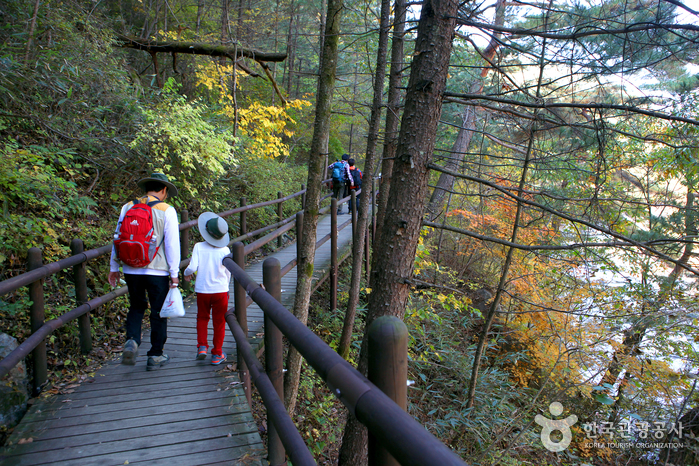
![Dals Garden [Korea Quality] / 달의 정원 [한국관광 품질인증]](http://tong.visitkorea.or.kr/cms/resource/44/2631944_image2_1.jpg)
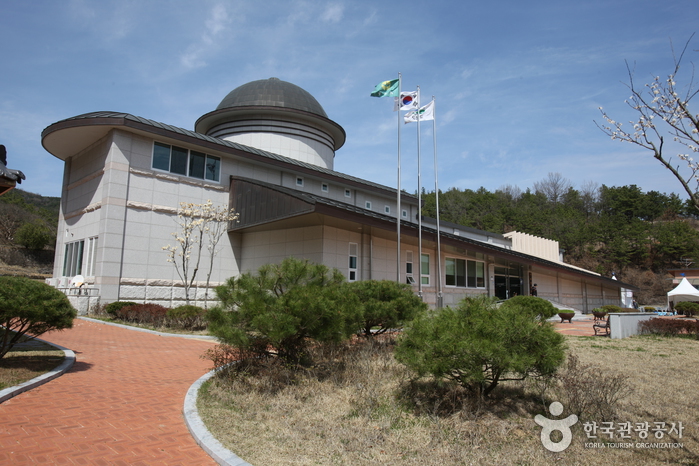
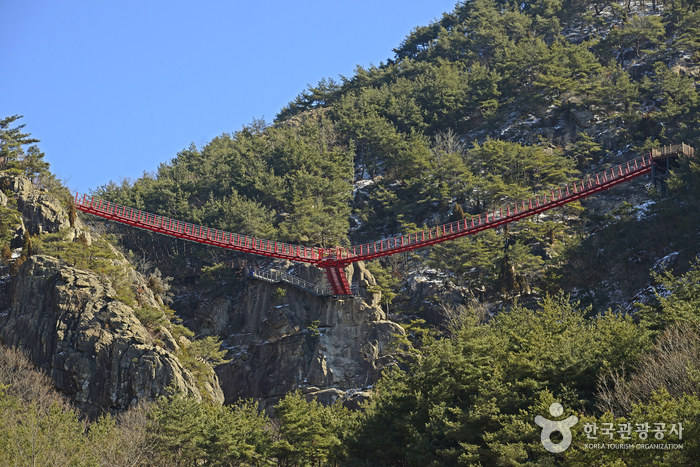
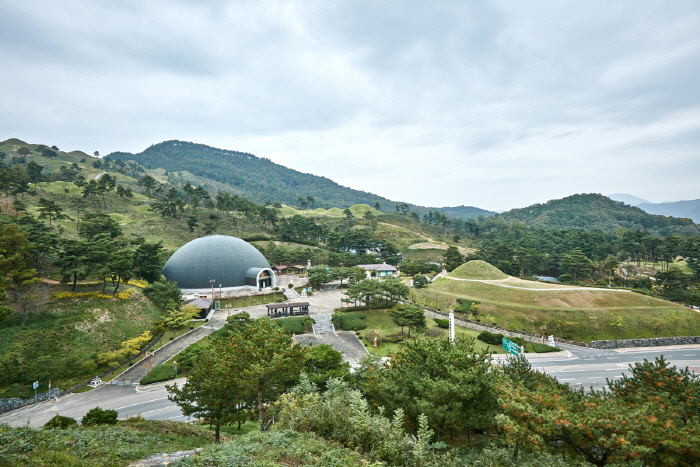
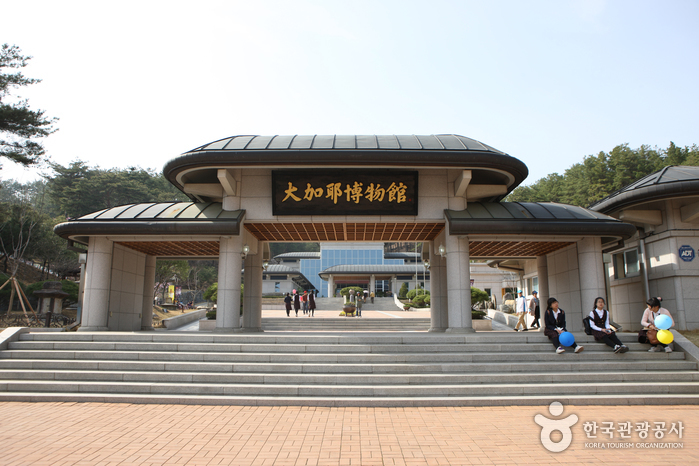
 English
English
 한국어
한국어 日本語
日本語 中文(简体)
中文(简体) Deutsch
Deutsch Français
Français Español
Español Русский
Русский